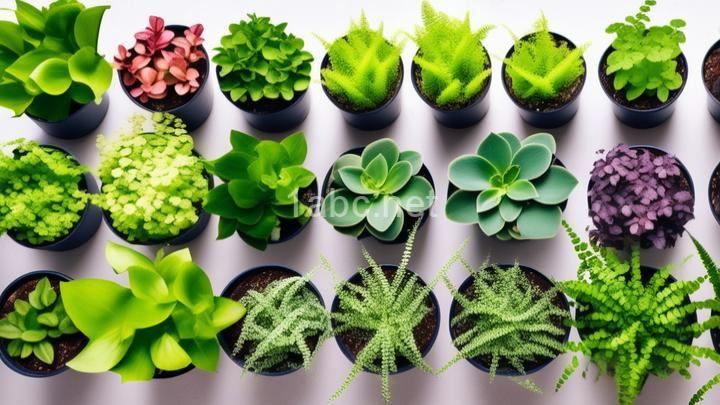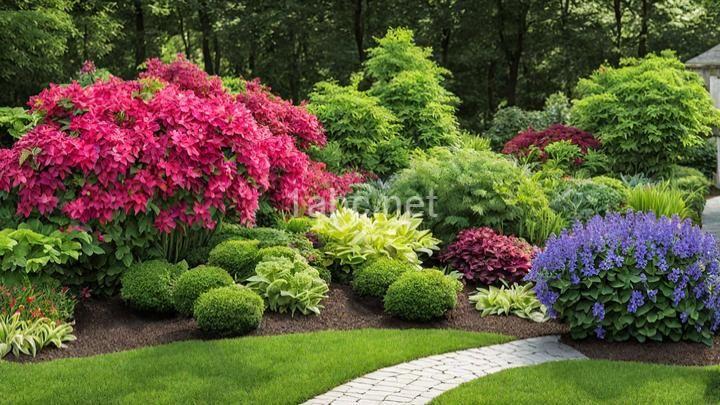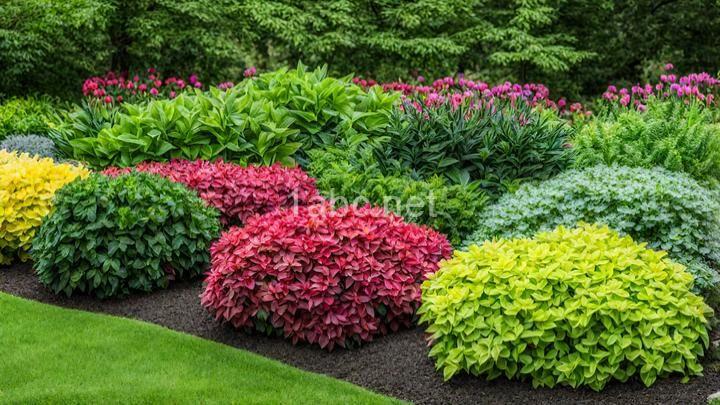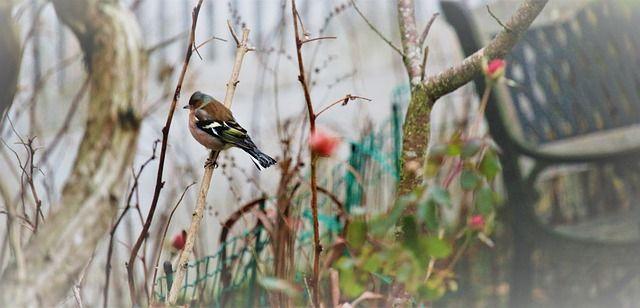Exploring the Benefits of Shade Plants: Aesthetic and Environmental
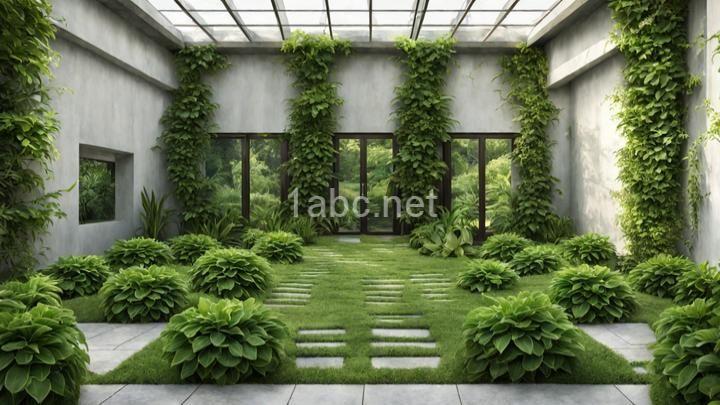
Welcome to our blog post on shade plants and their benefits! If you're looking to add a touch of nature to your garden or indoor space, shade plants are definitely worth exploring. In this blog post, we will discuss the aesthetic and environmental benefits of shade plants, as well as provide tips for choosing and caring for them. So let's dive in!Shade plants offer a variety of aesthetic benefits that can greatly enhance the beauty of your space. One of the standout features of shade plants is the diverse range of foliage colors and textures they offer. From vibrant greens to deep purples, shade plants can add a splash of color to any area. Additionally, the different leaf textures of shade plants can add interest and depth to your garden or indoor space, creating a visually appealing display.
In addition to their foliage, shade plants can also produce beautiful flowers, even in low-light conditions. Contrary to popular belief, limited sunlight doesn't necessarily mean a lack of blooms. Shade-loving plants, such as impatiens or begonias, are known for their stunning blossoms. These plants can add a vibrant touch to any shaded area, bringing life and color to spaces that would otherwise remain dull.
Apart from their visual appeal, shade plants can also create a soothing and tranquil atmosphere. The presence of greenery has a calming effect on our minds, and even in shaded areas, being surrounded by nature can help reduce stress and anxiety. So if you're looking to create a peaceful oasis in your backyard or a serene space in your home, shade plants are a great choice.
Now that we've discussed the aesthetic benefits of shade plants, let's move on to their environmental benefits. One of the key advantages of shade plants is their ability to help reduce energy consumption. By strategically placing shade plants around your home, you can create natural shading that can significantly reduce cooling costs during hot summers. The shade provided by these plants can help keep your home cooler, reducing the need for air conditioning and ultimately lowering your energy bills.
Another important environmental benefit of shade plants is their contribution to improved air quality. Through a process called phytoremediation, shade plants absorb pollutants from the air through their leaves, effectively purifying the surrounding environment. Certain shade plant species, such as ferns or peace lilies, are particularly known for their air purification properties. So by incorporating these plants into your space, you can enjoy cleaner and fresher air.
Shade plants also play a crucial role in preventing soil erosion. The root systems of these plants help stabilize soil on slopes or in erosion-prone areas, preventing the loss of fertile topsoil. Furthermore, shade plants help prevent water runoff, allowing water to penetrate into the soil and maintain its moisture content. This not only helps preserve topsoil quality but also promotes healthier plant growth.
Now that you're aware of the aesthetic and environmental benefits of shade plants, let's move on to some tips for choosing and caring for them. When it comes to selecting shade plants, it's essential to assess the light levels in the specific area where you plan to grow them. Shade is not a one-size-fits-all category, and different areas may have varying degrees of shade. It's important to determine the amount of shade your space receives and choose shade plants accordingly.
There are various ways to measure light levels, such as using a light meter or observing the amount of direct sunlight an area receives throughout the day. Once you have assessed the light levels, you can select shade-tolerant plant species that thrive in low-light conditions. Some popular shade plants include hostas, ferns, and heucheras, each with their specific care requirements. It's also a good idea to combine different shade plants to create visually appealing arrangements and add variety to your space.
When it comes to caring for shade plants, watering is a crucial aspect. While shade plants generally require less water than their sun-loving counterparts, it's important to ensure they receive adequate moisture. Regular watering, especially during dry periods, is essential to keep the plants healthy. Additionally, fertilizing shade plants with a balanced fertilizer can help promote their growth and overall vigor.
Pruning is another important aspect of shade plant care. Regular pruning helps maintain the shape and size of the plants, as well as promotes air circulation, which can prevent the development of diseases. It's also important to keep an eye out for pests that may affect shade plants and take appropriate measures to control them. Common pests that can affect shade plants include slugs, snails, and aphids.
In conclusion, shade plants offer a multitude of benefits, both aesthetically and environmentally. By incorporating these plants into your surroundings, you can enhance the beauty of your space and contribute to a healthier environment. From their diverse foliage colors and textures to their ability to reduce energy consumption and improve air quality, shade plants are truly green wonders.
So go ahead, embrace the charm and benefits of shade plants. Whether you're looking to create a tranquil garden or add a touch of nature to your indoor space, shade plants are a fantastic choice. Explore the world of shade plants, experiment with different varieties, and watch your space come to life with vibrant colors and a serene ambiance. Happy gardening!
FREQUENTLY ASKED QUESTIONS
What are the benefits of shade plants?
Shade plants provide numerous benefits in various settings. Some key benefits include:
-
Adaptability: Shade plants are well-suited for growing in low-light conditions and can thrive in areas where direct sunlight is limited or blocked by structures or trees.
-
Reduced water requirements: Shade plants typically require less water than sun-loving plants, as they are protected from direct sunlight and evaporation is minimized.
-
Protection from heat and UV rays: Shade plants offer natural cooling and can help reduce temperatures in their surroundings. They also provide shade to other plants, helping to protect them from excessive heat and harmful UV rays.
-
Erosion control: Shade plants with their dense foliage and extensive root systems can help prevent soil erosion by stabilizing the ground and reducing water runoff.
-
Aesthetics and visual appeal: Shade plants add beauty and diversity to gardens, landscapes, and indoor spaces. They come in various shapes, sizes, textures, and colors, allowing for a visually pleasing environment.
-
Wildlife habitat: Shade plants attract various wildlife, including birds, butterflies, and beneficial insects. They provide shelter, food sources, and nesting opportunities, contributing to biodiversity and ecological balance.
-
Low-maintenance: Shade plants often require less maintenance and attention compared to sun-loving plants. They typically have slower growth rates and may be less prone to certain pests and diseases.
-
Indoor decor: Shade-tolerant houseplants are ideal for indoor spaces with limited natural light. They can thrive in dimly lit rooms, offices, or areas away from windows, adding greenery and improving indoor air quality.
It's important to choose shade plants that are well-suited to your specific shade conditions, as different plants have varying shade tolerance levels.
How do I choose the right shade plants for my space?
Choosing the right shade plants for your space involves considering several factors such as the amount of shade, soil conditions, and the aesthetic you want to achieve. Here are some steps to help guide you in choosing the right shade plants:
-
Assess the amount of shade: Determine the level of shade in your space, whether it is partial shade, dappled shade, or full shade. This will help you select plants that can thrive in the available light conditions.
-
Evaluate soil conditions: Understand the soil type in your space—whether it is well-drained, loamy, or clayey. This will influence the types of shade plants that will flourish in your garden.
-
Research shade-tolerant plants: Look for plants that are known to thrive in shady conditions. Some popular shade-tolerant plants include hostas, ferns, astilbes, coral bells, and bleeding hearts. Collect a list of plant options that grow well in shade and are suitable for your region.
-
Consider plant characteristics: Think about the height, spread, and color of the shade plants. Determine if you want plants with flowers, foliage, or a combination of both. This can help you create an appealing design and ensure that the plants fit well within your space.
-
Make use of textures and contrasts: Use a variety of leaf shapes, sizes, and textures to create visual interest in your shade garden. Consider combining plants with different foliage colors and patterns to add contrast and depth.
-
Check plant requirements: Look into the specific light and soil requirements of each plant on your list. Ensure that they align with the conditions present in your garden. Pay attention to factors such as watering needs and maintenance requirements as well.
-
Plan for seasonal interest: Select shade plants that offer visual interest throughout the year. Look for plants with spring or summer blooms, or those that display interesting foliage colors during fall and winter months.
Remember to consider the unique conditions and microclimates of your specific space when choosing shade plants. It's also helpful to consult with local nurseries or gardening experts for personalized advice based on your location. Happy gardening!
Are shade plants low maintenance?
Yes, shade plants are generally considered low maintenance. Shade-loving plants are adapted to growing in areas with less sunlight, which often means they have lower water and nutrient requirements compared to plants that thrive in full sun. Additionally, shade can help protect these plants from extreme temperatures and reduce the need for frequent watering. However, it's important to note that even shade plants require some care, such as regular watering, occasional pruning, and monitoring for any pest or disease issues.
Can shade plants be grown indoors?
Yes, shade plants can be grown indoors. Many shade-loving plants thrive in low-light conditions and can be successfully grown as houseplants. Some popular shade plants that can be grown indoors include pothos, snake plant, ferns, peace lilies, and calathea.
